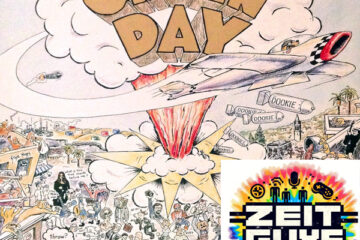What is America? By Grace Novascone
From 1840-1924 America is like an old crumbling building in the Valley of Ashes or the “fantastic farm where ashes grow” from Great Gatsby. Even though America has been through the Civil War and World War 1, the building still stands. However, it is about to fall because of the poor foundation of the building. The building stands on a recent conflict fought around slavery, harsh working conditions for our young and old alike, and unequal women’s rights. A house built without a strong foundation will collapse. So, this house needs renovations and changes, which happened in America from 1840-1924. In an old house, after a storm, there might be damage or leaks, and one might choose to ignore it, but the damage never goes away until it is dealt with.
The land of this house is slavery and is what America (and this house) is built off. African Americans were treated as a way to make money. African Americans were kidnapped, killed, beaten, and separated from their families. In 1867, The Modern Medea by Thomas Satterwhite was drawn, showing the story of Margaret Garner. Garner was a mother who escaped slavery but was captured. She killed her son because she did not want him to endure slavery.
Garner, a mother, would rather have her child dead than have them face the horrors of slavery. On January 1st, 1863, President Lincoln issued the Emancipation Proclamation, saying that the war for the Union was a war for freedom. The Proclamation also declares that “all persons held as slaves within the rebellious states are, and henceforth free.” However, as important and huge as this proclamation was, it did not end slavery; it only freed slaves in states not under Union control. No matter what renovations or changes we make inside the house, the foundation and where we are building is under us, and we can not escape it.
Our house is also filled with leaks. One major leak in this home is gender inequality. In America from 1840-1924, gender equality did not exist for the front half of this time period.
People like Elizabeth Stanton helped get plumbers and call attention to fix this problem. Women, for the longest time, did not go to work but stayed at home to cook, clean, and take care of the kids and were dominated by men. In 1869, Elizabeth Stanton founded the National Women’s Suffrage Association. Shortly after, groups of women met at the first-ever Seneca Falls Convention to sign the Declaration of Sentiments, which began years of activism. Another figure in the fight for equal rights is Charlotte Gilman and her early feminist piece, “The Yellow Wallpaper.” Throughout the short, Gilman shows the overpowering and controlling men at this time through the main character’s husband, John. John treats her like a child, and Gilman uses symbols for this when she is kept in the nursery – where a child sleeps, or the windows being “barred up for little children.” Gilma connects with women during this time about how trapped they felt. Another activist was Kate Chopin, who authored “The Story of an Hour.” In this short story, Louise is a traditional wife, and when she finds news that her husband has died, she is enlightened, sees an opportunity to do what she wants, and is finally free. Eventually, in the 19th century, women got the right to vote, and there were increasing numbers of women in the workforce.
The interior of the building is filthy. The dust that we see along the walls of the house is America’s horrible working conditions and child labor. Industrialization grew fast after the Civil War, creating many new jobs and problems. One was that this was a time when children worked routinely in this country. Some children began working at only ten years old. Children were subject to the same work as adults and were commonly put in more dangerous spaces because of their tiny bodies and hands. Factory working conditions were harsh, and a typical day was around ten to twelve hours and low wages. Working conditions were dangerous during this time due to the lack of sanitation, poor technology, and safety regulations. However, a man named Jacob Riis was a cleaner who sought to brush off this dust. Jacob Riis was a journalist and social reformer who used his camera to show public problems. His photographs showing the inhumane working conditions helped and advocated social reform and change. Jacob Riis was not the only cleaner of this building; many others, like Upton Sinclair, joined him. “The Jungle” by Upton Sinclair was a book that brought attention to the harsh working conditions in the American meat packing industry and the high hiring of immigrants. This book shocked the public and led to new safety regulations.
Next, let’s consider the exterior of the house. Pleasing society is present in American society now more than ever and is the house’s exterior. It all started in 1843 with the short story “The Birthmark” by Nathaniel Hawthorne. In this story, Alymer is a scientist, and his wife has a birthmark that he sees as a “flaw.” Alymer becomes fixated on removing this, but in his experiment to remove it, Georgiana dies. He uses science to change nature which is a theme that is growing more and more in America. A mistake in current culture is the mass appeal of the beauty industry and the generic, one-size fits all definition of beauty. Americans are inundated with images of what their bodies should or should not look like, thereby explaining the obsession with plastic surgery, a multi-billion dollar industry. Americans and society have changed to where young girls stress how many comments they get on an Instagram post or the number of comments. American girls especially constantly compare themselves to other girls and think, why can’t they look like her? This strong desire to perfect yourself for the public has led to new makeup or surgeries and many editing apps to make your face a little smaller, your teeth whiter, or your stomach flatter.
Nevertheless, regardless of everything wrong or broken in the house, Americans must provide for ongoing maintenance and assure that they do what is necessary to hold the house together. There are times when America is unified and together, just like a house. But there are also times when our maintenance is not kept up, and the house falls into disrepair. During these times, leaders like Abraham Lincoln shouldered the colossal responsibility of doing the hard work that made the house sustainable for years to come. In Abraham Lincoln’s House Divided Speech, his main goal is to unite the country even though the country differs in the conversation of slavery. Because of this, Lincoln says that we must all be for slavery or against it. In the Gettysburg Address by Abraham Lincoln, Lincoln says that people died for us, and we have an extraordinary place, and we need to protect America and know what we stand for. America welcomes others, embodies all dreams, and conveys that anything is possible in America. The New Colossus by Emma Lazarus is a poem about the Statue of Liberty about the welcomeness and inclusiveness in America. The Statue of Liberty and the lit torch represent how America is open to all and shows the way.
Today the building is rebuilt and moved to West Egg, where the new money is and perhaps a new beginning with “all lights going on in West Egg now; and the electric trains.” However, just “across the courtesy bay” stands East Egg, and “just halfway between” or perhaps a few blocks away lies the Valley of Ashes. East Egg and The Valley of Ashes did not go away; they are still there and standing, just like how America’s history is still there and will be close to us wherever we go. Even though “the Eggs are so close in distance, [they] seem to be worlds apart,” like America hundreds of years ago. While our new home in West Egg is stately and beautiful, it still has work to do to make it as good as it can be for all its citizens. That work never stops; there are always going to be problems that arise. But the way Americans respond to these problems is what makes Americans American like the American people who curated the “Montgomery Legacy Museum” and “The National Memorial for Peace and Justice,” which was filled with stories, messages, and even bodies of those who faced racial inequality. The curators found an issue in America and brought attention to it by creating a beautiful place for Americans to remember African Americans whose lives were unjustly taken and allows Americans to learn their own history (even if it is History we do not wish to remember). Even though cracks still exist in this home (America), like violence or still racial inequality, I know that the brilliant American people will have the courage to fix these cracks. America is my home.
What is America from 1840-1930? By Jack Euart
The United States of America, what some argue to be the greatest country of all time, is a land of many things. During the time period of 1840-1930, America had much going on in all phases of its country. Ranging from economics, to world wars, all the way to everyday life, America had its hands full. That being said, between the years of 1840 and 1930, the United States of America was a land of opportunity. Theodore Roosevelt, in April of 1910 in Paris, sums up what being an American is.
During this time, America was looked at as a mentor for other countries. We had been one of the only countries during this time to adopt and maintain a constitution. When he delivers this speech in Paris, the people of France are intently listening. Throughout the whole speech, President Roosevelt talks about how citizens are able to get their hands dirty and work for themselves. With one of the most famous lines in Presidential speech era, President Roosevelt says “The credit belongs to the man who is actually in the arena, whose face is marred by dust and sweat and blood; who strives valiantly; who errs; who comes short again and again, because there is no effort without error and shortcoming.” Every American citizen has the opportunity to work as hard as possible for the betterment of their country and themselves.
During this time period, many different laws were passed but none more important than the 14th Amendment. The 14th Amendment was a massive step to creating civil rights for all people in our nation. This amendment states that all citizens born in America have the same rights under the protection of the law. For the first time in American history, a man could turn to anyone born in that country and say “we have the same rights.” The 14th Amendment gave all Americans the opportunity to be equal with one another and have their rights protected by the law.
Talking about this time period and not at least mentioning the civil war would be a disservice. Starting in 1861, the civil war shaped America into what it is today. Lasting about 4 years of straight blood, sweat, and murdering, the civil war finally came to a close in 1865. One of the most important pieces ever written by Abraham Lincoln was his “Gettysburg Address” during the Civil War. Lincoln talks about how these men have to be remembered by saying “The world will little note, nor long remember what we say here, but it can never forget what they did here.” Each citizen in the United States had the opportunity to pick and fight for a side that they believed in. Lincoln emphasizes that we have to remember what these men did because of all the devotion that went into both sides.
Many different songs that people still listen to today talk about the opportunities in America. One of the most important pieces we talked about as a class was “Don’t Fence Me In” written by Cole Porter. During the years of 1840-1930, the West was a land of opportunity. If people needed to restart their life, they would travel out West to do that. The West had its own lifestyle, and it was full of opportunities or new beginnings. Porter, in this song, writes “Oh give me land, lots of land under starry skies above, don’t fence me in.” The West has always been known for having open and free land in America. Every single citizen had the opportunity during this time period to travel out West and take advantage of the land.
Toward the end of this time period, some would argue to be the most important part of these years, was World War I. World War I is one of the most prominent pieces of history of all time. There were several different countries that were involved, and the whole world was keeping up with what was going on. Although America didn’t enter the war until later, the U.S had to institute a draft to keep their country safe. With one of the most famous political cartoons ever, James Montgomery Flagg makes his infamous “I want you” poster. Uncle Sam is deeply looking into your eyes saying that he, who is the face of America, wants you to fight for him.
Every man in America had the opportunity to fight for America. They were needed and wanted during a time where the country needed it most.
As long as America is a country, it will always be a land of opportunity. The way our constitution is written puts the citizens in the best position to succeed. That being said, from the years 1840-1930, America was especially a land of opportunity. The opportunities presented during these years taken on by citizens shaped the United States of America into what it is today.


